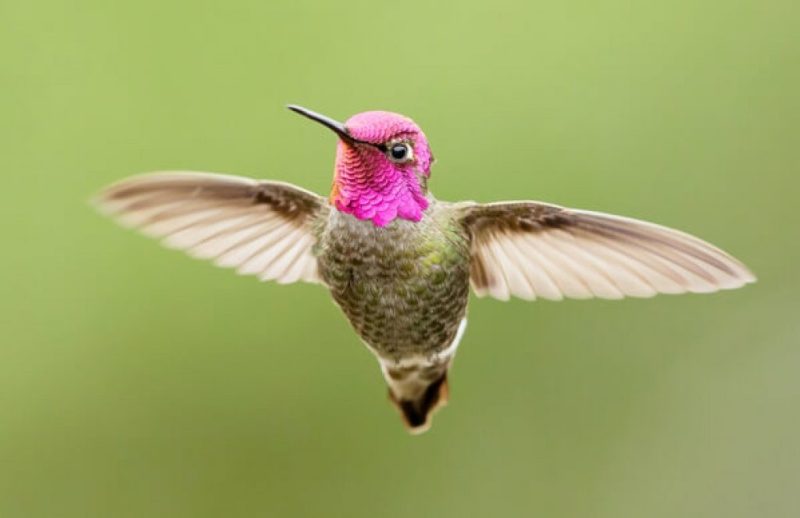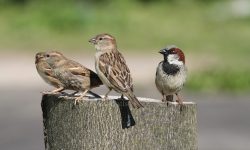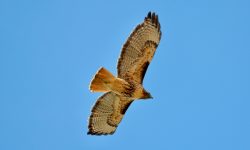Few birds dazzle the eye and boggle the mind quite like hummingbirds. These miniature marvels, cloaked in iridescent color and powered by wings that move faster than the blink of an eye, defy the limits of size and physics. Their flight is a dance of precision, their beauty a burst of living jewels. Beloved by scientists, admired by photographers, and cherished by birdwatchers, hummingbirds are nature’s high-speed miracles wrapped in glittering feathers. Join us as we dive into eight astonishing traits that make these aerial acrobats some of the most extraordinary creatures on Earth.

1. Unmatched Flight Capabilities
The Only Birds That Master the Sky in All Directions
Hummingbirds are true aerial acrobats—the only birds on Earth that can hover in place, zip backward, dart sideways, and soar straight up with ease. Their flight is more than just fast—it’s a display of complete control, resembling a helicopter more than a typical bird.
What makes this extraordinary maneuverability possible is a rare anatomical advantage:
-
Ball-and-socket joints at the shoulder let the wings rotate in a full circle
-
Their wings move in a figure-eight motion, generating lift on both the upstroke and downstroke
This means they don’t just flap—they sculpt the air, redefining what’s possible in bird flight. Whether feeding from a flower suspended mid-air or chasing off a rival, hummingbirds move with a precision that seems almost supernatural.
2. Incredible Wing Speed
Wings That Hum with Blinding Speed
If you’ve ever heard a soft, electric buzz near a blooming flower, chances are a hummingbird was nearby. That signature “hum” isn’t just charming—it’s the sound of wings vibrating up to 80 times per second.
Depending on the species and their activity, a hummingbird’s wings can beat between 50 to 80 times every single second—too fast for the human eye to follow. This astonishing speed allows them to hover with laser-like precision, dart through the air like living arrows, and perform aerial maneuvers no other bird can match.
But this isn’t just a spectacle. That rapid wingbeat is the very engine behind their ability to:
-
Feed mid-air from delicate flowers
-
Duel with rivals over territory
-
Perform gravity-defying courtship dives
In the hummingbird world, speed isn’t optional—it’s survival.
3. A Heart That Races for Survival
The Most Relentless Heartbeat in the Avian World
Hummingbirds live life in the fast lane—and their hearts prove it. To power their rapid wingbeats and relentless motion, a hummingbird’s heart must work overtime, reaching speeds of over 1,200 beats per minute during flight. That’s faster than any other bird—and faster than nearly any other heartbeat in the animal kingdom.
This furious rhythm fuels a sky-high metabolism that demands near-constant refueling. Most hummingbirds must feed every 10 to 15 minutes, visiting hundreds of flowers a day just to survive. Miss a few meals, and their energy reserves can plummet dangerously low.
But nature has given them a survival trick. When night falls or food becomes scarce, hummingbirds enter a state of torpor—a deep, temporary hibernation where:
-
Heart rate slows to just a fraction of its daytime speed
-
Body temperature drops drastically
-
Breathing becomes faint and slow
It’s a daily balancing act between burning bright and powering down, all orchestrated by one of the hardest-working hearts in the natural world.
4. A Diet Built for Energy
Fueling a Supercharged Life with Nectar and Tiny Prey
A hummingbird’s lifestyle demands fuel—and lots of it. To sustain their rapid wingbeats and nonstop movement, these tiny dynamos rely on a sugar-rich diet, sipping nectar from hundreds of flowers each day. They don’t just visit blooms at random—they have incredible memory, remembering which flowers they’ve drained and when to return for a refill.
But sugar alone doesn’t build muscle or grow feathers. To round out their diet, hummingbirds also hunt tiny insects, spiders, and even consume a bit of pollen. These microscopic meals deliver:
-
Protein for growth and repair
-
Fats for long-term energy storage
-
Essential nutrients for strong feathers and eggshells
During nesting season or molting, their need for protein-rich food skyrockets, and hummingbirds become expert bug-catchers—plucking gnats from the air or snatching spiders from leaves. Their diet is a carefully tuned engine, built for high-performance flight and survival in fast-forward.
5. Specialized Tongue and Beak
Nature’s High-Speed Nectar Pump
At first glance, a hummingbird’s long, needle-like beak looks like a simple straw for sipping nectar. But hidden inside is one of the most sophisticated feeding tools in the natural world.
Their beaks are perfectly shaped to probe deep into tubular flowers, but it’s their extraordinary tongue that truly does the magic. Split at the tip and lined with tiny hair-like structures, the tongue flicks in and out up to 20 times per second—faster than the blink of an eye.
Rather than sucking nectar like a straw, the tongue:
-
Unrolls inside the flower, expanding instantly
-
Traps nectar using capillary action and surface tension
-
Retracts rapidly, delivering nectar straight to the throat
This action works like a biological piston pump, perfectly engineered to extract the maximum amount of sugar-rich fluid with minimal effort.
Together, the beak and tongue form a precision system, allowing hummingbirds to feed efficiently from flowers of all shapes and depths—an evolutionary masterpiece honed by millions of years of floral partnership.
6. Iridescent, Jewel-Like Feathers
Color Born from Light, Not Pigment
Hummingbirds shimmer like flying jewels—but what makes them sparkle isn’t dye or pigment. Instead, their radiant feathers are the result of structural coloration, a phenomenon where microscopic platelets in the feathers refract and reflect light, much like a prism.
Depending on how the light hits, a hummingbird can appear:
-
Emerald green in the morning sun
-
Sapphire blue by afternoon
-
Fiery red or deep purple in courtship flight
These shifting hues aren’t fixed colors—they’re alive, changing with every flutter and turn. This iridescence isn’t just for show. It serves multiple purposes:
-
Attracting mates with vibrant, eye-catching brilliance
-
Establishing dominance in territorial battles
-
Blending in with dappled forest light when stealth is needed
In the world of birds, no one wears light quite like a hummingbird. Their feathers are not just beautiful—they’re optical masterpieces, designed by evolution to catch the eye and command attention.
7. Incredible Memory and Navigation
Big Brainpower in a Tiny Body
Don’t let their size fool you—hummingbirds are some of the most intelligent birds in the sky. With a brain that makes up 4.2% of their body weight—the largest brain-to-body ratio among all birds—they pack serious brainpower into their delicate frames.
This sharp intelligence gives them:
-
Impressive spatial memory, allowing them to remember the exact location of specific flowers
-
The ability to recall which flowers have nectar and when they’ll refill
-
Navigation skills that rival GPS, guiding them along migratory paths that span hundreds or even thousands of miles
Some species return to the same exact garden or feeder year after year, arriving almost to the day. This level of memory and orientation is rare in such a small creature and proves that size is no barrier to intelligence in the natural world.
Thanks to their remarkable minds, hummingbirds don’t just survive in complex, changing environments—they strategize, adapt, and thrive.
8. Fierce Territorial Behavior
Tiny Bodies, Giant Attitudes
They may be small, but hummingbirds are fearless defenders of their domain. Especially around nectar-rich feeding spots, these pint-sized powerhouses show remarkable aggression—chasing off intruders that include not only rival hummingbirds, but also larger birds, bees, butterflies, and even humans who linger too close.
Their territorial displays are bold and unmistakable:
-
High-speed aerial chases
-
Sharp, warning chirps
-
Dramatic dive-bombing maneuvers
During the breeding season, males crank up the drama even more—plunging through the air in steep courtship dives and showing off their shimmering feathers in flashes of light to both woo females and intimidate rivals.
What they lack in size, they make up for in spirit. Hummingbirds are among the boldest, most energetic birds on Earth, proving that courage doesn’t come in large packages—it often whirs on wings, ready to fight for a single flower.
Conclusion: Nature’s Dazzling Powerhouses
Hummingbirds combine speed, agility, intelligence, and beauty in a way no other bird does. From their iridescent feathers to their hover-flight mastery, these tiny creatures represent one of evolution’s most elegant designs. Whether spotted in your backyard or deep in a rainforest, a hummingbird is always a wonder to behold.






